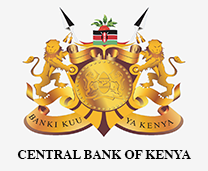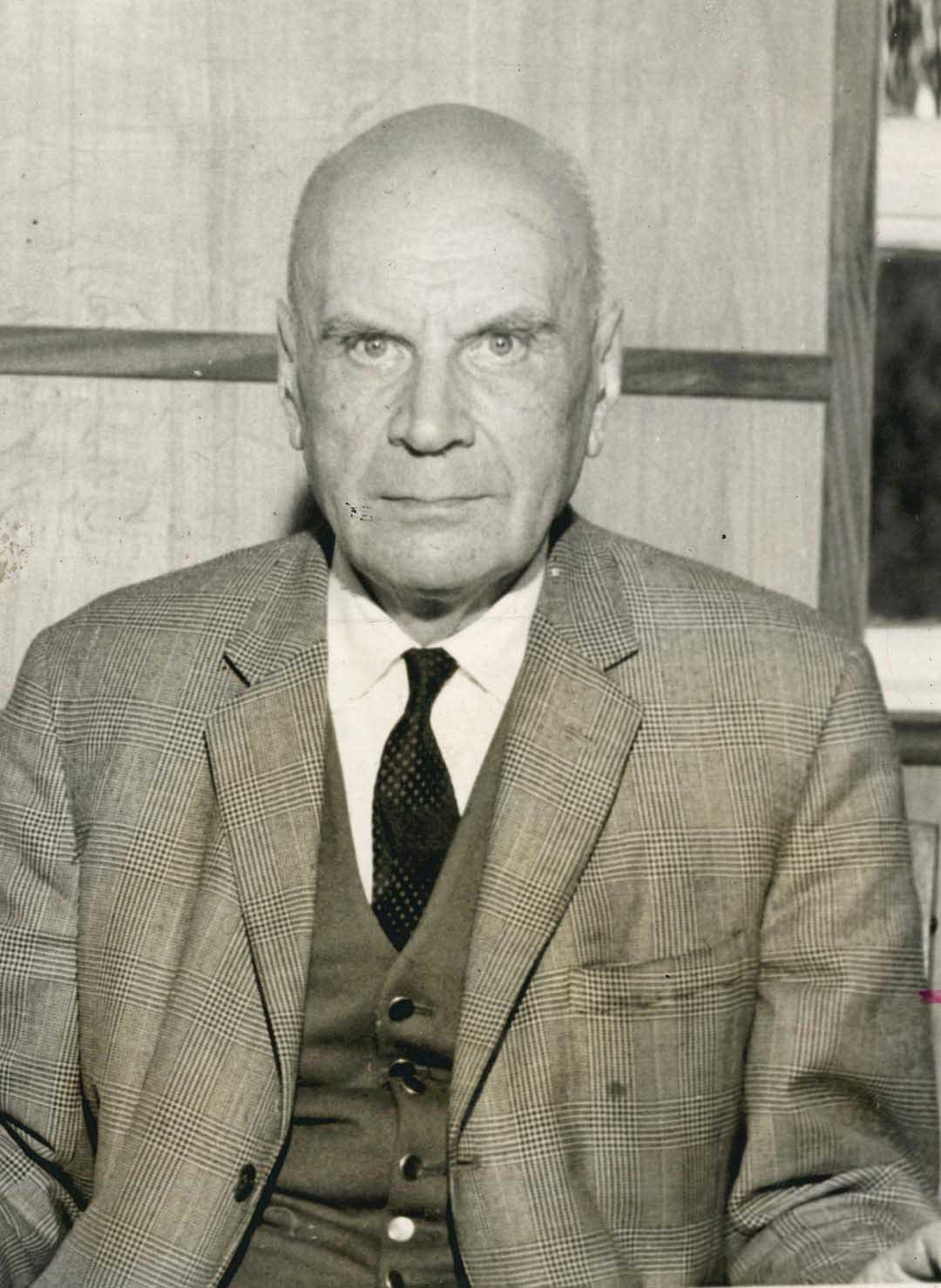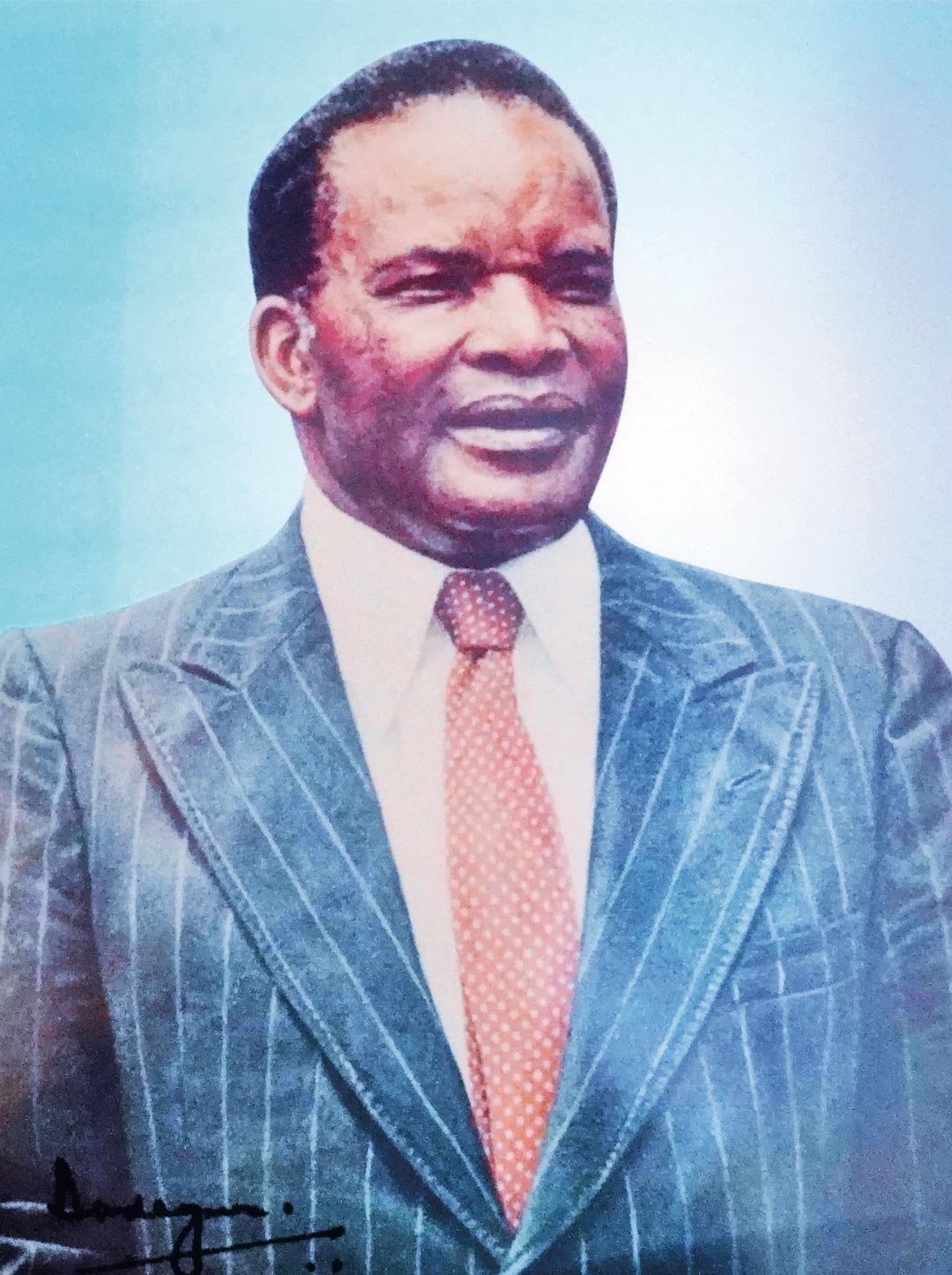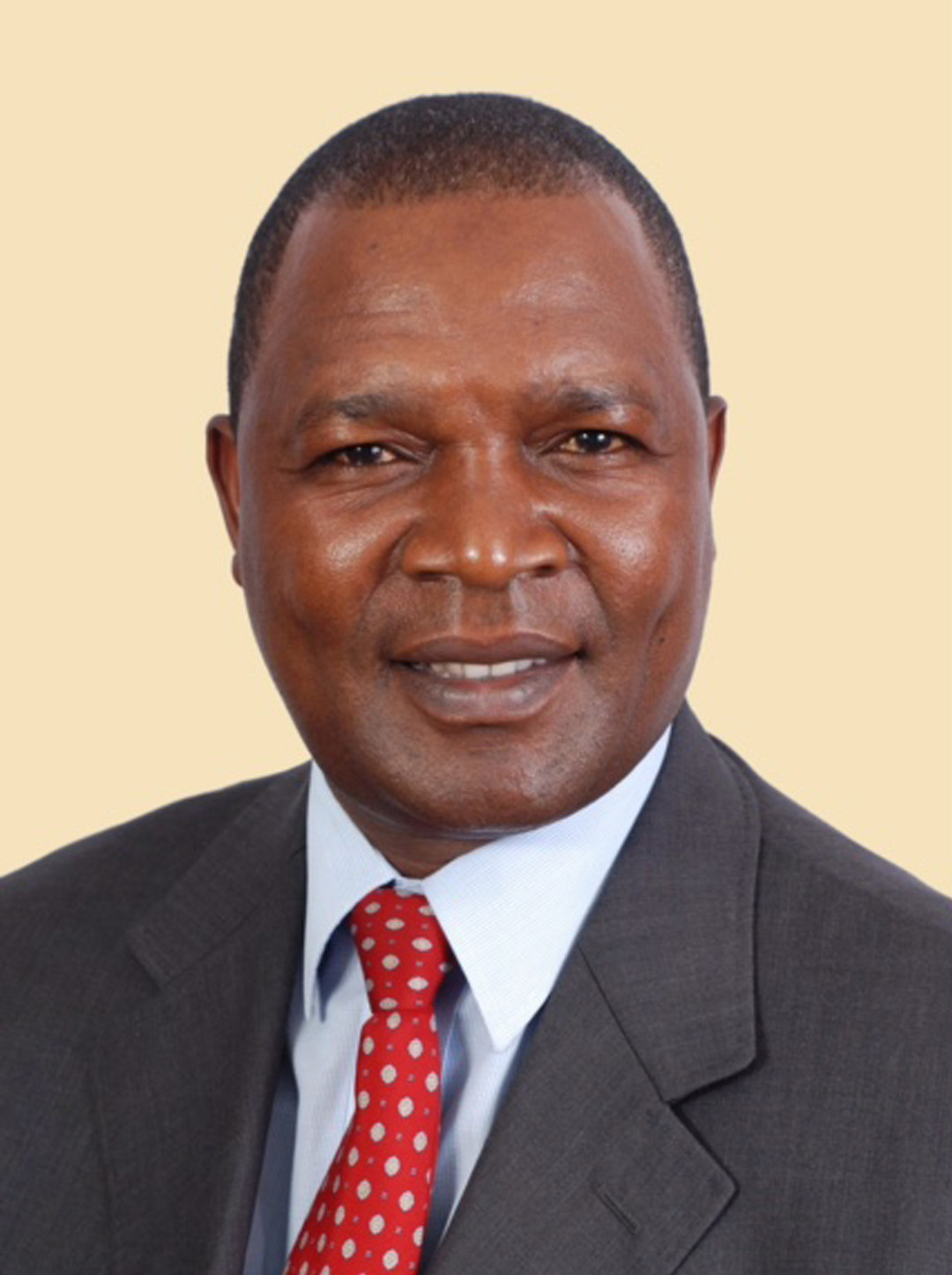Bank History
The Central Bank of Kenya was established by an Act of Parliament of March 24, 1966 and opened its doors to the public on September 14, 1966. The Bank is now anchored in the Constitution under Article 231. The mandate of the Bank is to formulate and implement monetary policy that promotes price stability, fosters liquidity, solvency and stability of the banking sector, issue currency notes and coins, and provide banking services to the Government, commercial banks and other financial institutions.
Prior to establishment of Kenya’s central bank, the East African Currency Board (EACB) undertook the role of currency issuance in the entire East African region throughout the colonial period to independence. Prior to Kenya’s independence in 1963, the East African Currency Board (EACB) published a report advising the three countries of Kenya, Uganda and Tanganyika to establish an East African Central Bank to act as the banker to governments — the bank was to provide banking services for the commercial banks, to smoothen financial fluctuations, and to function as an instrument of official monetary policy.
At independence, the EACB started performing some central banking functions in the absence of one. They provided credit to the government and were authorised to lend to commercial banks for crop financing. However, the board’s functions could not match those of a central bank. The concept of a single central bank began being mooted though it did not succeed. This then led to the establishment of the three East African country central banks of Tanzania, Uganda and Kenya.
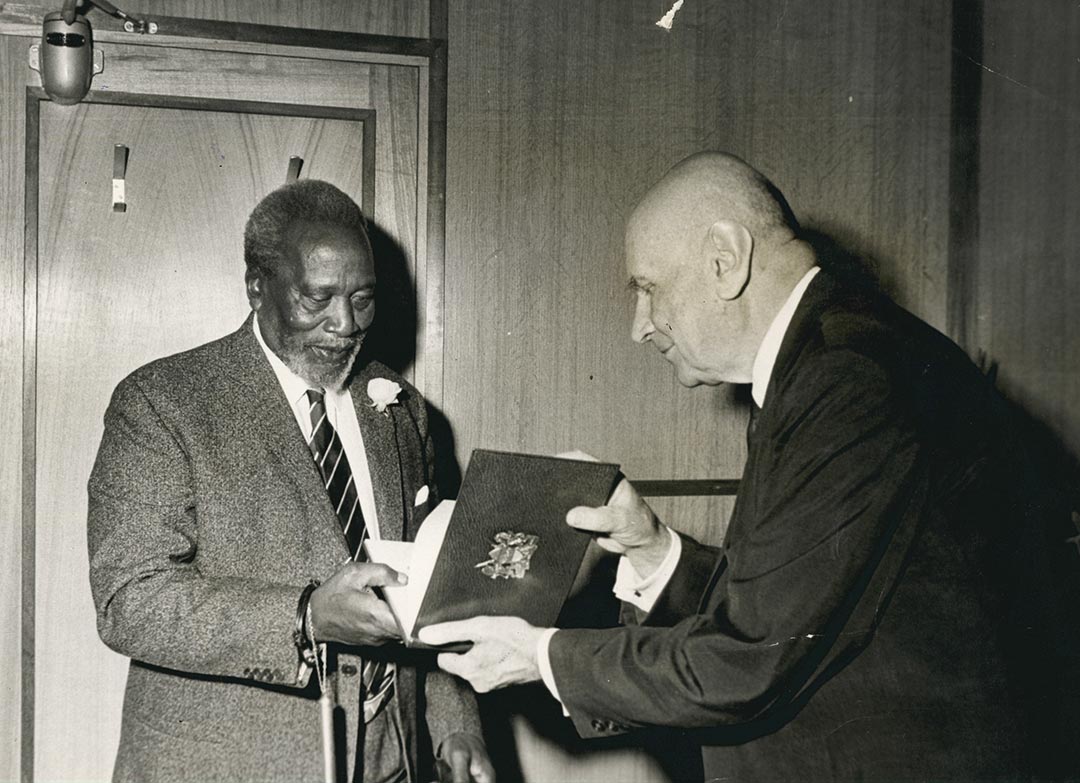
Kenya’s first President Mzee Jomo Kenyatta being presented with a set of new currency notes by CBK Governor Dr Leon Baranski on September 15, 1966.
Key Milestones
For the past 50 years, the Bank has made significant strides in fulfilling its mandate. Successive Boards have seen the Bank grow from a staff establishment of 60 in 1966 to over 1,300. In response to its expanding functions, the areas of operation have grown from its head office in Nairobi to three branches (Mombasa, Kisumu, Eldoret) and three currency centres (Nyeri, Nakuru, Meru). With the enabling environment for effective growth, the Bank has witnessed a number of milestones in the country including the following:
Key Milestones
1896 First bank ever established in Kenya – the National Bank of India
1905 Establishment of Mombasa Currency Board
1910 Standard Bank of South Africa established
1911 Standard Chartered Bank founded in Kenya
1916 Barclays Bank established in Kenya.
1919 Mombasa Currency Board replaced with a London based East African Currency Board
1921 Cessation of the Indian Rupee as a legal tender
1922 East African shilling replaces the Rupee exchanging at Sh2 a rupee
1951 General Bank of Netherlands, later known as ABN Amro, set up
1953 Bank of India and Bank of Baroda set up
1956 Habib Bank (overseas) Ltd set up
1957 Kisumu Currency Centre established under East African Currency Board (EACB)
1960 The headquarters of the EACB moved from London to Nairobi
1962 Commercial Bank of Africa, which was registered in Tanzania, opens a branch in Kenya.
1965 The first locally owned commercial bank, the Co-operative Bank of Kenya, registered under the Co-operative Societies Act
1966 March – enactment of Central Bank of Kenya Act. September – Official Opening of the Central Bank of Kenya at Herufi House. Kenya’s first currency banknotes issued to the public – denominations 5,10,20,50 & 100.
1967 Kenya’s first currency coins issued to the public – denominations 5ct, 10ct, 25ct, 50ct and KSh.1.
1968 The Cooperative Bank opens its doors for business. The National Bank of Kenya, the second locally owned bank, established
1971 Following agreement with the government, National and Grindlays banks’ commercial banking operations come under the control of the newly created Kenya Commercial Bank (KCB)
1972 CBK Head Office (current location) officially opened by Kenya’s first President Mzee Jomo Kenyatta
1973 The Industrial Development Bank (IDB) set up to provide long-term equity and capital to large-scale and medium industrial enterprises.
1977 Mombasa Currency Centre operations taken over by newly established CBK Mombasa Branch
1978 Official opening of CBK Mombasa Branch by Kenya’s first President the late Mzee Jomo Kenyatta
1981 CBK takes over operations of Kisumu Currency Centre from KCB
1983 Introduction of a crawling peg to replace the fixed exchange rate system of 1966 – 1982
1985 Banking Act (Chapter 488) amended to introduce an explicit deposit insurance scheme in Kenya – the Deposit Protection Fund Board (DPFB)
1986 New KSh.200 banknote introduced by CBK making it the highest denomination in circulation
1988 New KSh.500 banknote introduced by CBK making it the highest denomination in circulation
1989 Introduction of the first two automated teller machines (ATMs) by Standard Chartered Bank Kenya Ltd at its Moi Avenue branch
1991 Elimination of interest rates controls. CBK Eldoret Branch begins operations
1992 Kisumu Currency Centre upgraded to be CBK Kisumu Branch and starts operations in current building
1993 Introduction of a floating exchange rate regime
1995 Introduction of foreign exchange (forex) bureaus. New KSh.1,000 banknote introduced by CBK making it the highest denomination in circulation
1996 Non-bank financial institutions (NBFIs) required to convert to banks.
1997 CBK in partnership with Ministry of Finance establishes the Kenya School of Monetary Studies (KSMS)
1998 Full automation of the Nairobi Clearing House using the Magnetic Ink Character Recognition (MICR) technology to facilitate clearing of cheques
2002 Going live of Kenswitch – a shared financial switch consortium of more than 20 commercial banks in Kenya. Electronic Funds Transfer (EFT) payments introduced to the Automated Clearing House
2005 Risk Management Guidelines outlining the minimum coverage and elements of a comprehensive risk management programme issued. Introduction of the Kenya Electronic Payments and Settlements System (KEPSS) to help phase out the paper-based interbank settlement system
2006 Minister for Finance cedes operational supervisory powers of licensing, revocation of licenses, opening and closing of places of business and statutory management to the CBK. Enactment of the Microfinance Act, putting in place the necessary laws and regulatory framework for the establishment, licensing and supervision of microfinance banks
2007 Introduction of mobile money system in Kenya
2008 The Banking (Credit Reference Bureau) Regulations issued
2009 Enhancement of the minimum core capital requirements for commercial banks from Kshs 250 million in 2009 to Kshs 1 billion by end of 2012. Introduction of Agency banking through an amendment of the Banking Act. The Proceeds of Crime and Anti-Money Laundering Act was passed by Parliament. Introduction of cheque value capping to stop the processing of payments, cheques and Electronic Funds Transfers (EFTs), of Ksh.1 million and above through the Nairobi Automated Clearing House. Nyeri Currency Centre opened for operations
2010 Introduction of Credit Information Sharing mechanisms. Integration of mobile money with banks. Nakuru Currency Centre opened for operations
2011 Cheque truncation system is introduced to support the exchange of electronic cheque images without the conventional exchange of physical cheques. Meru Currency Centre opened for operations
2012 The Kenya Deposit Insurance (KDI) Act enacted in response to the need to expand the mandate of the Deposit Protection Fund Board (DPFB) as the banking sector’s resolution authority. Reduction of the cheque clearing period from T+3 to T+2 days
2013 CBK granted power to supervise institutions and their associates on a consolidated basis and in liaison with other competent authorities. Shortening of the cheque clearing period to T+1 days. Introduction of the East African Payments system (EAPS) to facilitate real-time settlement of financial transactions by the public through commercial banks in the region using the five East African currencies.
2014 Kenya joins the COMESA Regional Electronic Payment and Settlement System (REPSS). The REPSS eliminated the need for each commercial bank to use off-shore correspondent banks for inter-country settlements
2016 Legislation of the Banking (Amendment) Act that introduces a cap on lending rates of not more than four per cent above the Central Bank Rate and deposit rates at 70% of the CBR. CBK in collaboration with the National Museum of Kenya opens a Numismatic Gallery
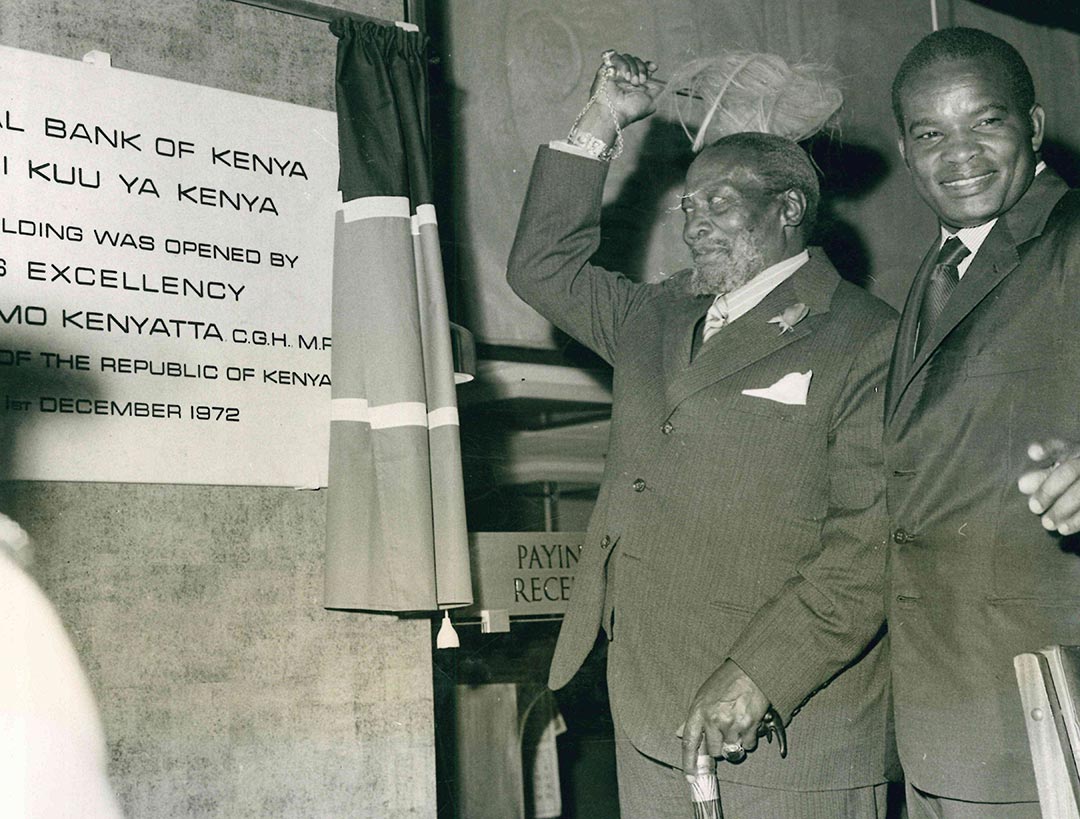
H.E. Mzee Jomo Kenyatta officially opens the CBK Head Office in 1972
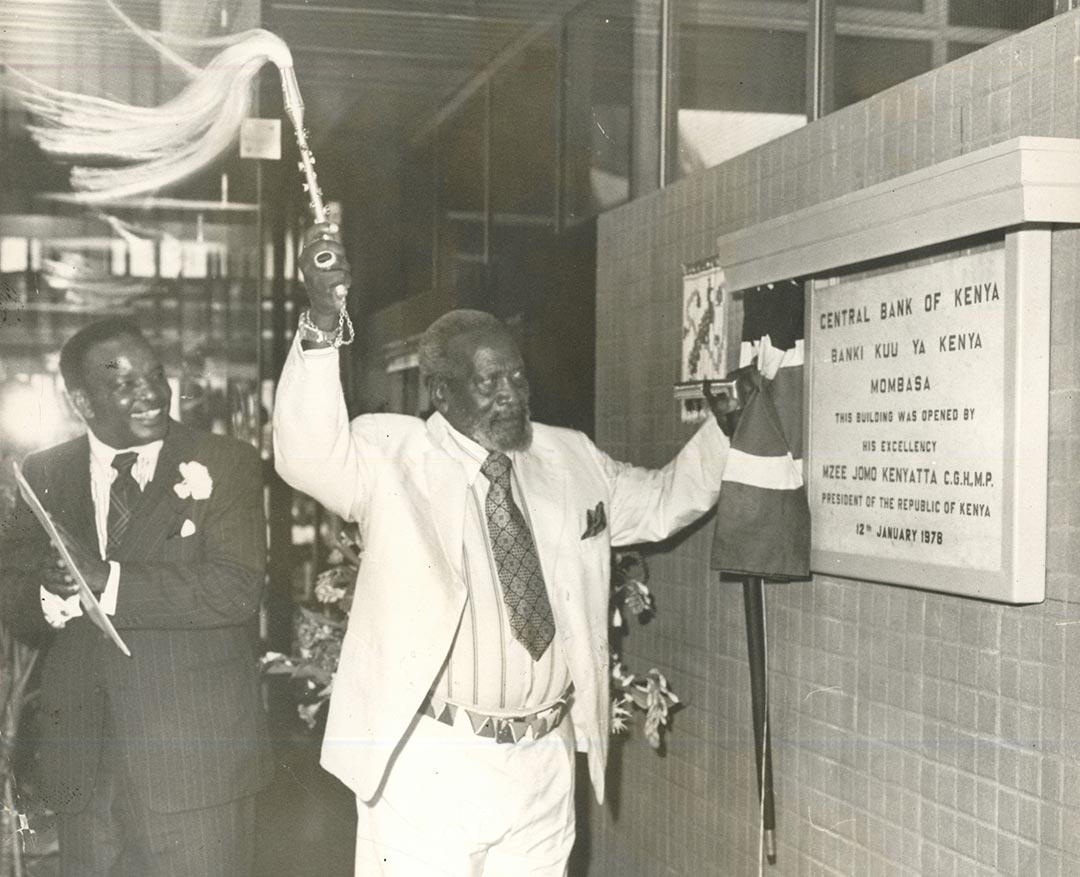
H.E. Mzee Jomo at the official opening of Mombasa Branch
Governors
Development of Banking in Kenya
The financial journey in Kenya dates back to the pre-colonial periods. At first, the pioneering banks concentrated on financing international trade along the Europe-South Africa–India axis. They, however, soon diversified operations to tap the opportunities for profitable banking created by a growing farming settler community and pioneer traders in the local economy to whom they provided deposit and credit facilities. It was only a matter of time for banking to spread into the interior.
It all started with Indian money lenders operating quasi bank services probably as early as the 18th century but the first recognisable bank was Jetha Lila Bankers from India, which was established in Zanzibar in 1880. In 1889 the National Bank of India appointed the trade house of Smith Mackenzie to be their agent in Zanzibar. Smith Mackenzie had a Mombasa branch in 1887 which was taken over by the Imperial British East Africa (IBEA) in 1888. The National Bank of India established its own office in Zanzibar in 1892. In July 1896 the National Bank of India established a branch in Mombasa renting premises from Sheriff Jaffer. The spread continued to 1904 when they opened a branch in Nairobi.
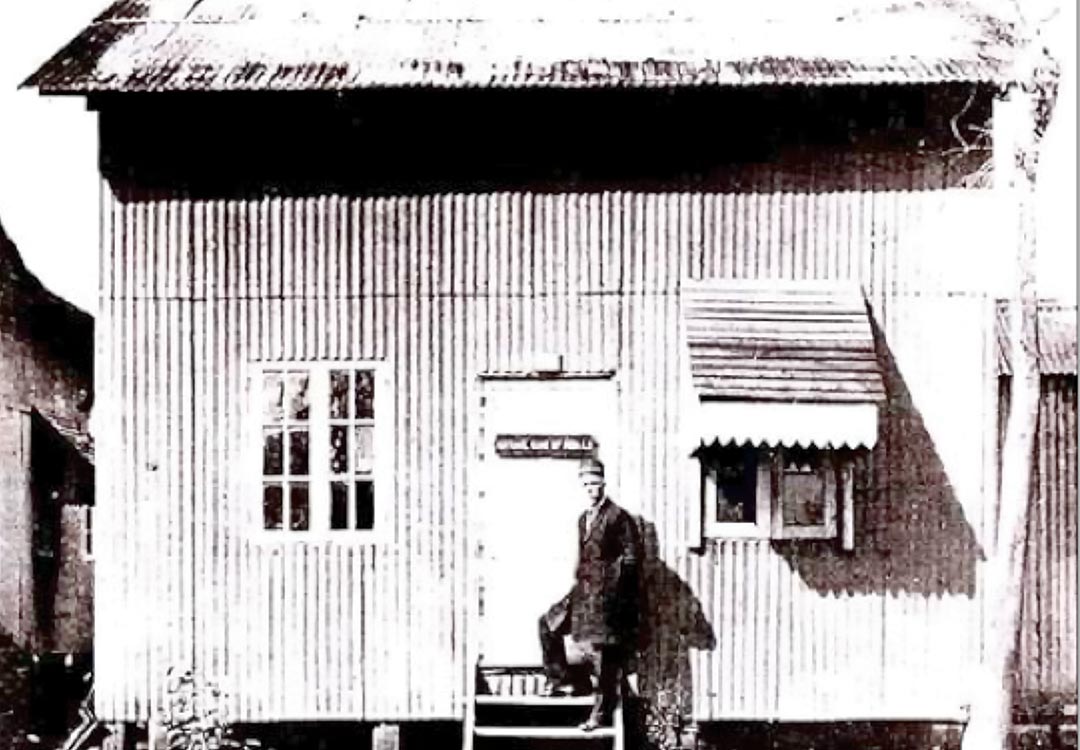
National Bank of India, Nairobi on August, 1904.
In April, 1909, the East Africa Post Office Savings Bank Ordinance was passed and in April of the following year, the Ordinance for the Regulation of Banks Established or to be Established in the East Africa Protectorate was passed. The former Ordinance established the first bank in the formal sense while the latter enabled the National Bank of India to become the first commercial bank. By 1911 there were only three banks:-
- The National Bank of India with branches in Mombasa, Nairobi, Nakuru and Kisumu.
- The Standard Bank of South Africa having come in December, 1910 – operating in four locations: Mombasa (3 branches), Nairobi (2 branches), Nakuru and Kisumu.
- Kathiawad and Ahmedabad Banking Corporation had a shortlived presence in Mombasa from 1910 to 1915.
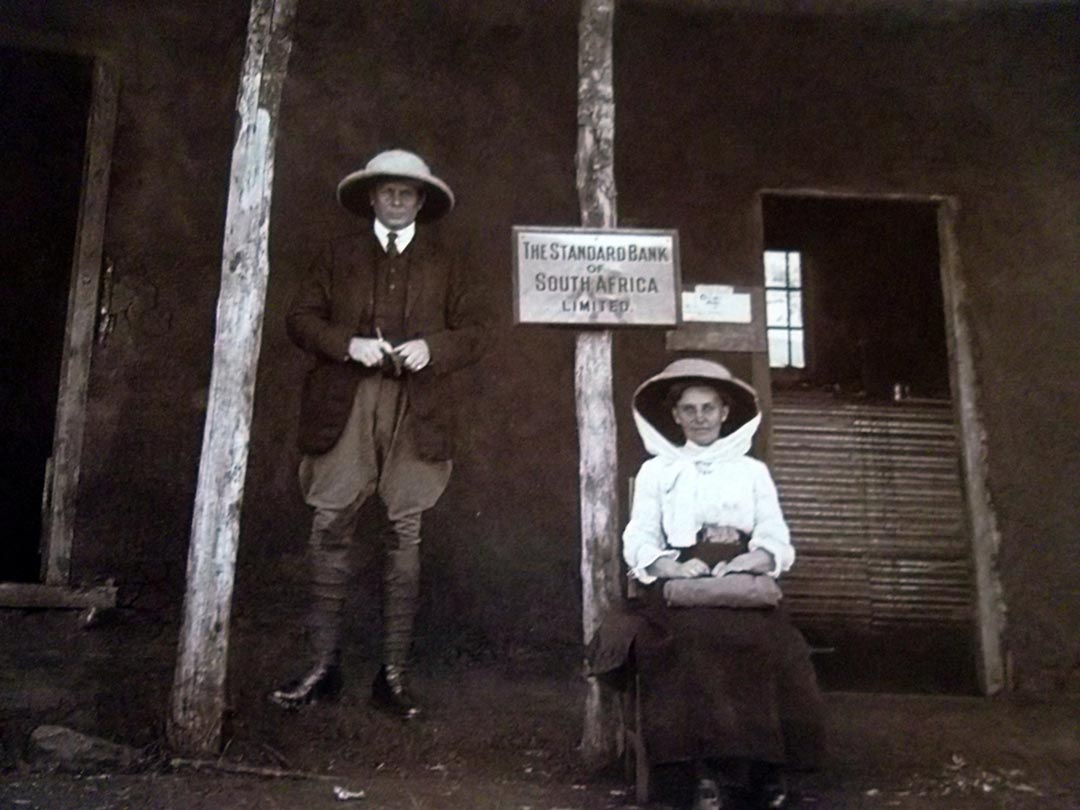
The Standard Bank of South Africa Limited, Eldoret, 1912
The expansion of the banking networks grew from one branch in the town of Mombasa in 1896 to eight branches in five towns before the First World War having added Nairobi, Nakuru, Kisumu and Eldoret. The National Bank of South Africa, which was to become Barclays Bank DCO in 1926, arrived in Mombasa in 1916. During the Great Depression from 1929 to 1939, there was a gold rush to Kakamega and in 1934 there were two bank branches opened in the town to service the prospectors. These branches did not survive and were closed during the Second World War. By 1948, banks were to be found in 10 towns having expanded to Nyeri, Nanyuki, Kitale, Kericho and Thompson’s Falls (Nyahururu) with 18 branches as Mombasa, Nairobi, Nakuru and Kisumu all got representation from the three banks.
As time progressed, the changing landscape of banking began to note the entrance of fully indigenous banks. Kenya’s first fully locally owned commercial bank was the Co-operative Bank of Kenya, which was initially a co-operative society. It served the needs of growing farming communities and started operations in 1968. In the same year, the National Bank of Kenya became the first fully-owned government bank. In 1971, the Kenya Commercial Bank was formed following the merger of the National and Grindlays Bank, with the government owning a 60-per cent majority stake. It took poll position as the largest of the country’s commercial banks in terms of deposits and number of branches.
After independence, the banking sector in Kenya has continued to grow, reflecting the country’s growth towards economic prosperity.
